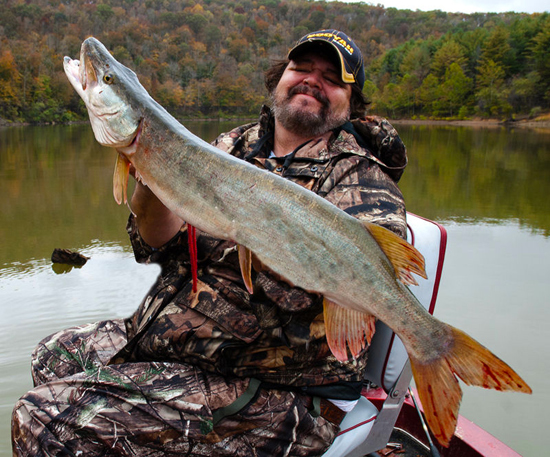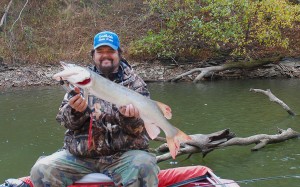
By Chris Erwin
Last week, we talked about a few of the lures that I make and use in the fall to find and catch fish. While I’m sure there are many others that you can use, I have focused on these for a couple of reasons. To begin with, I hope that some of you catch the bug and start building lures of your own. For me, it broadens the appeal of fishing and gives us an off-season hobby at the same time.
The bait that has been super productive on musky has been the Bear Claw Bucktail Magnum. These are the 7½-inch inline spinnerbait pictured in last week’s column. The bait gives off a big flash and sinks slowly compared to other baits of its size. It also is made with a keel-weighted bucktail that prevents it from rolling or tumbling. This also helps the big magnum blade to start turning quickly.
This bait really comes into its own in the fall fishing weed edges or laydown trees. The bait seems to pull fish from a long distance. I fish it with an eight-inch steel leader.
Tip: If you are just moving from bass fishing to musky fishing, there is a tip I should share with you. Fishing lures that have steel leaders are very hard on ceramic fishing rod tips. If your rod has a ceramic tip, you should avoid reeling the leader swivel into the tip guide, as they tend to crack ceramic guides. After a guide is cracked, it could cut your line right when you might have the largest fish ever on your line. For this reason, musky rods I build are made with a Silicon Nitride2 tip guide. They have a lot longer life and can take the pounding from leaders.
Around weeds you want to start the bait as soon as it hits the water, running it as slow as you can and still keep it turning. This will be pretty fast, however, the musky seem to want to chase this bait down so be ready for the figure eight.

The second bait is the drop spinnerbait. The one pictured in last week’s column was the LB Thumper. This is a # 6 single Colorado blade with a ½ oz. body and a living rubber skirt. While I fish for musky on the weed flats and laydown trees, I fish for bass in standing timber, usually near the outside bends of the channel. The key here is to stay on the shad.
I have found that on colder, overcast days the bass were in the channel trees. However, on warm days, the shad would move up on the flats as would the bass along with the musky and other fish feeding on the shad. I cast past the standing timber, angling myself so the bait would drag right up to the tree. As the bait hit the tree, I would let it fall to a five count and then pick-up the retrieve. Many times the strike would come just as I would pick up the retrieve.
The last bait was the LB Ripper, a topwater bait. It is 6½ inches long with big props on both ends. The bait is fished using short jerks. It was the most productive at the break of daylight and at dusk before dark. The inline spinner may claim the most musky, however, the Ripper by far has caught more fish. With more bass over 20 inches than I can count under its belt and many muskys to boot, this bait can be a thriller in the low-light periods when fish are active. It’s effective in all the areas. I was catching fish in weeds, timber and laydown trees, but it was limited on this trip to the low-light periods. Once the sun got on the water, it was the other baits that caught the fish.



Be the first to comment